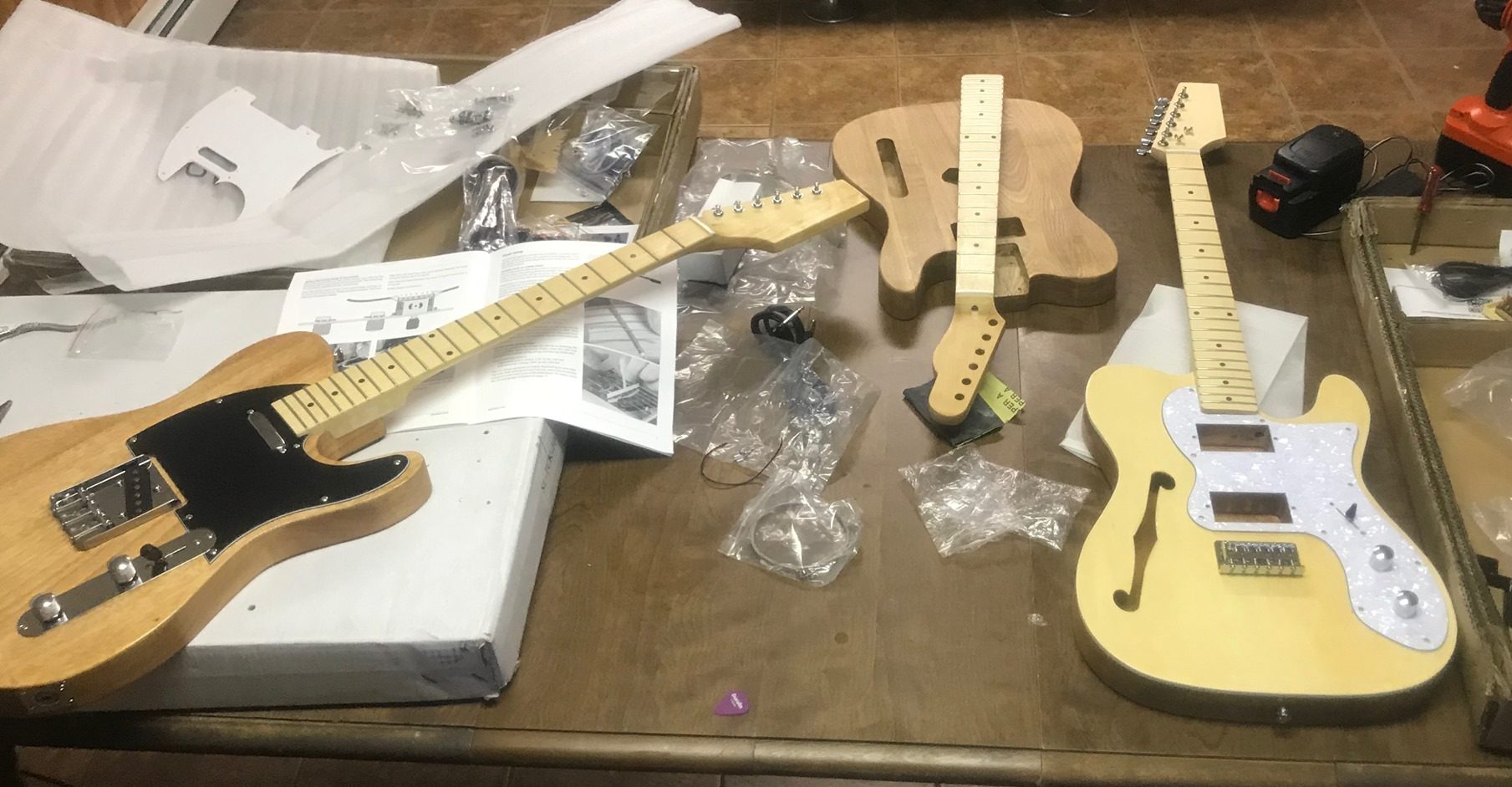While the last double cut hollowbody I reviewed won me over big time, this up and coming brand has offered something that fits me like a glove!

Cost: $1099.00 from Stanford-guitars.com or Thomannmusic.com
Overview & Final Score: 9.0 out of 10
A relatively new guitar company, Stanford is under the iMusic Network family of brands, alongside the amazing Maybach guitar company. Stanford’s main goal, as far as I can tell, is to bring high level guitar quality and design down to a much more affordable price, something they thoroughly accomplished with their Crossroad Thinline 30. This fully hollow take on the vintage Epiphone Casino design features a Maple top, back, and sides as well as a Maple neck. That Maple neck holds an Ebony fingerboard, dot inlays, and holds Kluson Supreme tuners on the simple but classy headstock. A trapeze style tail piece is paired with a tune-o-matic style bridge and there are dedicated volume and tone pots for each of the two P90 pickups.
Sound: 9
The P90s chosen by Stanford here are just superb, with all the mid-range boost you want and expect. It really cuts through mixes, all while retaining surprising clarity and body. I pin that on the fully hollow body, which in my opinion adds some extra muscle to chords and open strings. In the bridge position, it was awesome to dial in some classic P90 tones for the punk and garage rock that I love. The Clash, The Strokes, Black Rebel Motorcycle Club, it all poured out of this guitar when distortion and drive were introduced. Surprisingly, I haven’t had many feedback issues either despite the hollowbody, though I’m sure if I really cranked my amp to big gig levels it would make an appearance. The neck pickup proved to be smooth and buttery, perfect for lead lines, both bluesy and atmospheric. In fact, this Stanford Crossroad Thinline 30 was perfect for a lot of the diverse alternative music I’ve gotten into recently. With influences from rock, jazz, pop, and shoegaze, this guitar handled Young The Giant, Coldplay, The Police, and more. It’s always rewarding to recreate some of my favorite tones with guitars I have for review, but very few, if any, could cover as many sounds as this Stanford did through my rig. When it came to the volume and tone controls it was great to see fairly sensitive pots, which let me shape the sounds with more detail than most affordable guitars I’ve played.
Playability: 9
Once I picked up this Stanford the first thing I noticed how was how nice the neck finish was. It was super smooth, with a thin satin-like feel, but I was really struck by how thin the neck felt. I have grown to prefer thinner necks recently, as I feel I get a little more control over the fretboard. This Crossroad Thinline 30 also had really solid tuning stability, even if the G string went out of tune more frequently than the others. But on any Gibson-influenced guitar that is to be expected and I was overall impressed with how much of a beating the guitar could take from bends, and harsh downstrokes. When you pair that with the lightweight hollow body, this Stanford is a joy to play standing up and perfect for the stage in my opinion. Fretwork was similarly excellent, which is basically a great way to describe this guitar’s playability: excellent.
Finish & Construction: 9
Nothing to complete about here either as this late entry into our yearly guitar rankings is putting up a stiff fight. This Stanford just feels and looks like it should cost double the price tag. There is virtually nothing to improve, though I would have gone with a normal stop bar tailpiece so that I could have added my own Bigsby to it! The hardware and pickups are well installed and there are no signs of sloppy finish work, tooling marks, or any poorly cut binding. From top to bottom the Crossroad Thinline 30 is just a joy to play and look out. I don’t have as much experience with hollow body guitars as I do with semi-hollow, ES-335 types, so I was delighted by how lightweight and airy this guitar feels. It has a lovely acoustic tone and the Antique Vintage Sunburst finish should win over any Gibson/Epiphone purist.
Value: 9
Straight 9s here and it is well deserved even if it seems like lazy scoring. Everything on this guitar feels just a notch below perfect to me. When you add up the excellent tuning stability, the smooth feel, great tones, etc…it’s just a phenomenal end product that is about half the price of most competing models. This Stanford Crossroads Thinline 30 perfectly quenches my thirst for a Gibson-style hollowbody electric, something I’ve wanted ever since I saw U2’s Rattle and Hum documentary. This guitar really does fit me like a glove but I honestly think a lot of players will feel similarly. Stanford has put together a versatile guitar that does the original Epiphone Casino design justice, all while falling in between the two current Epiphone versions in price. While it may be closer in price to the overseas Casino vs the American-made Casino, it is surely much closer in quality to what we can expect from the new premium Epiphone. This Stanford Crossroads Thinline 30 is quickly becoming my go-to guitar, good luck getting it back from me Stanford!
Check out the Stanford in my recent fuzz pedal demo too!
Good for: Classic Rock, Pop, Beatles Sounds, U2 Sounds, Blues, Versatile Players, Gibson Fans Who Can’t Afford One, Gibson Fans Who Can Afford One But Now Don’t Need To

Thanks for this review Matt It helped my decision to order a Stanford. I’ll receive it soon I hope.
LikeLiked by 1 person
Best decision you ever made!
LikeLike